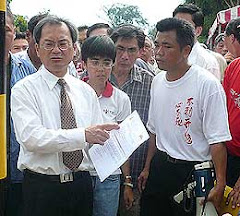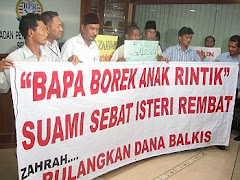SOME quarters think that by increasing the Kuala Lumpur population of 1.6 million to 2.2 million by 2020 will result in density increases beyond sustainable limits.
And this would inadvertently results in poorer quality of life, traffic and crowd congestion, air and noise pollution and even unemployment.
But there are others who believe that if a city population declines it would lead to decay or even ruin, and eventually turned the once vibrant city into a ghost town.
 Renewal: Changes are in the offing in KL.
Renewal: Changes are in the offing in KL.The Draft Kuala Lumpur City Plan 2020 envisions Kuala Lumpur as a world-class city with its residents living quality lifestyles despite a projected population increase of 600,000 by 2020.
The plan states that for Kuala Lumpur to progress and prosper, sustainable development is the only way to achieve it.
According to town planner Norliza Hashim, this is only possible if the people are willing to change their lifestyle patterns and make compromises.
She pointed out that the current land use pattern was the direct result of past practices and development trends, which were based on single land use zoning.
“Things have changed, trends have changed, market forces with environmental concerns requires new and integrated approach to land use planning,’’ she said.
Norliza said to become a world-class city, there must be a more flexible approach at land use zoning.
According to Norliza, some of the coordinated efforts in ensuring and supporting the city’s growth to cater for needs of its population include allocating land for future requirements, facilitating use of land and buildings, regulating incompatible land use and activities, integrating transport and spatial development, encouraging mixed-use development and transforming, and regenerating Brownfield sites and urban villages.
“Apart from the need to protect the environment and public open spaces, improving the traffic situation and upgrading public amenities, it is also time for people to embrace mixed use development,’’ Norliza said.
She pointed out that mixed-use development encouraged a balance of housing, employment, commercial and other community facilities in the same area.
“Working and living in the same area reduce travel time. Mixed development helps achieve intensive development by using the same space for more than one purpose,” Norliza said.
A valid point and one endorsed by Real Estate and Housing Developers Association (Rehda) KL branch secretary Tan Ching Meng.
Tan said for KL to compete with other world-class cities it must move with the times.
“KL cannot be frozen by history and traditions. To advance, it needs to transform with the times and undergo a rejuvenation pro-cess,’’ he said.
A good example cited by both Norliza and Tan are Singapore’s Tao Payoh township and Bugis Street, which have successfully undergone regeneration process incorporating mixed-use development.
“There are commercial, retail, residential and transit stations nearby and, despite the lack in open spaces, the residents are enjoying a quality lifestyle,’’ Norliza said.
She said this could also happen in KL with proper planning and integrated development within the inner city.
According to Norliza, in most of the world-class cities, such Vancouver in Canada, the city is well integrated with high-rise buildings and yet could also boast the most number of parks.
Norliza said this could be done in Malaysia if the people recognised and accepted the fact that the way of modern life was high-rise and no longer horizontal.
Tan, meanwhile, said KL should not be stilted in comparison to its conurbations, the aggregations of urban areas.
“The capital city should be the liveliest in the country, with individual interest balanced with the overall needs of the KL residents,’’ he said.









No comments:
Post a Comment